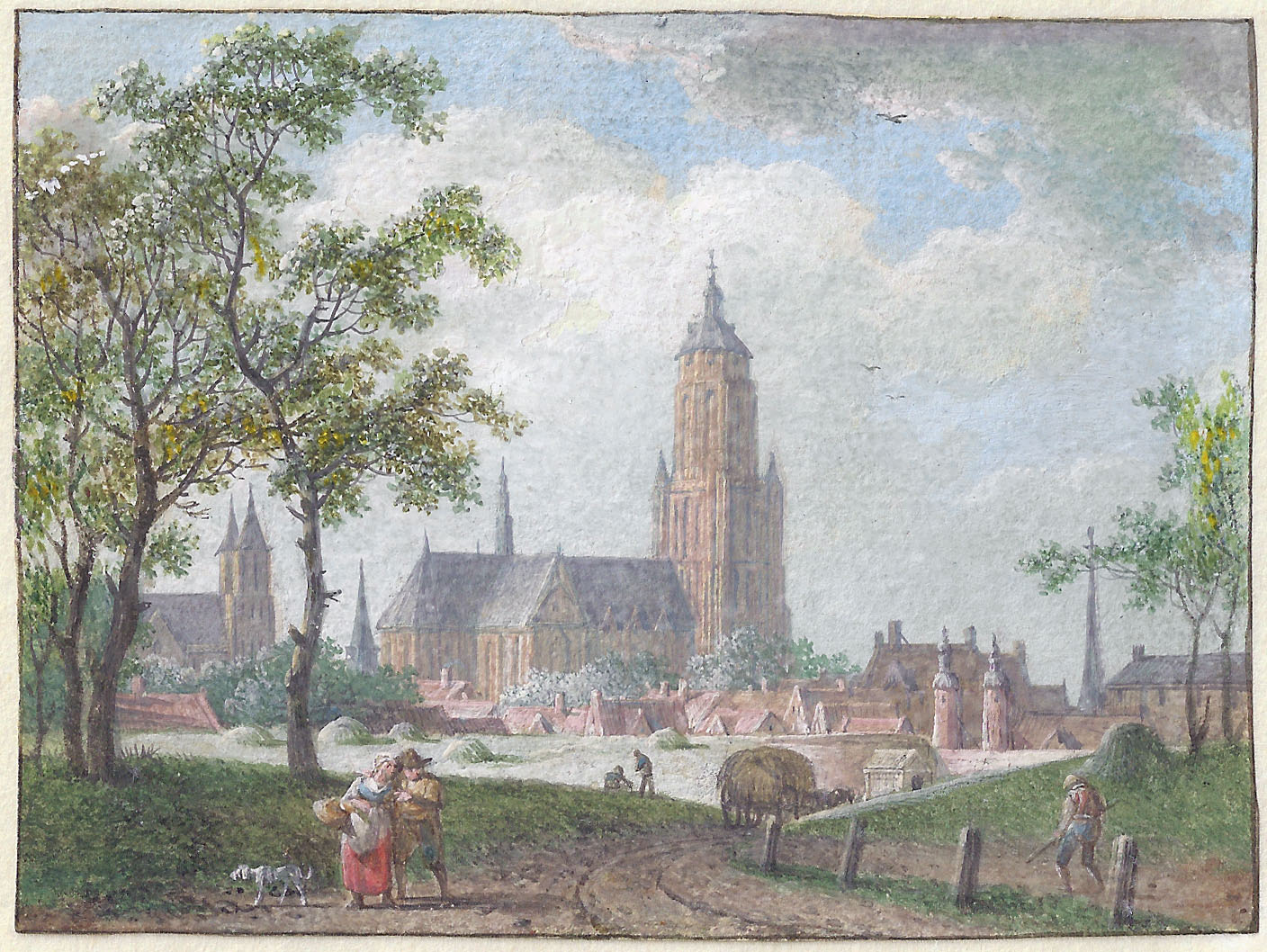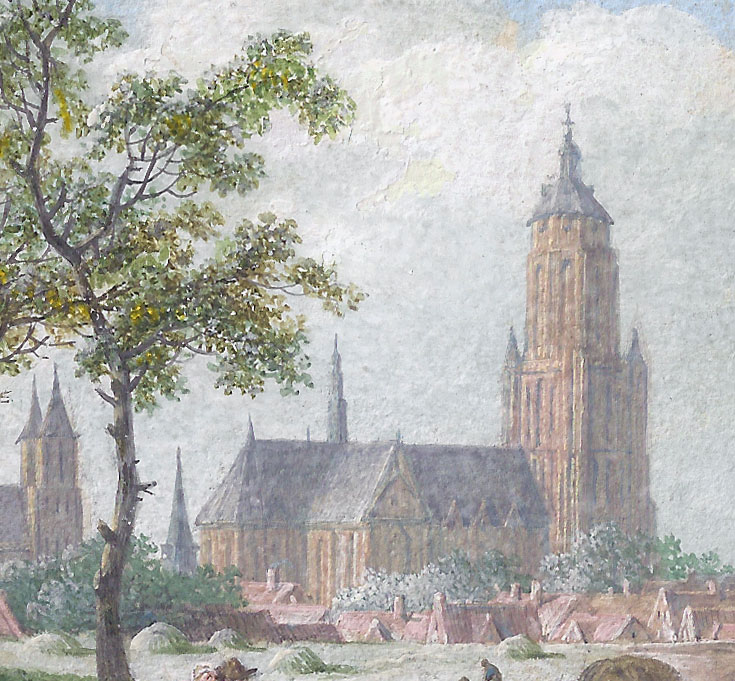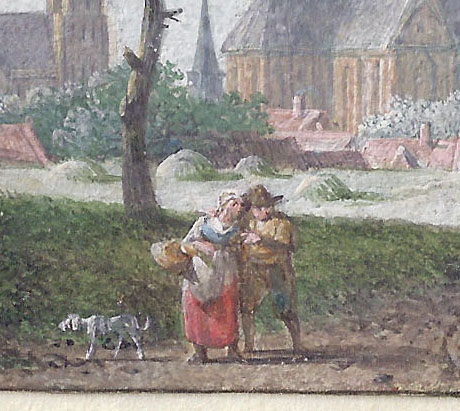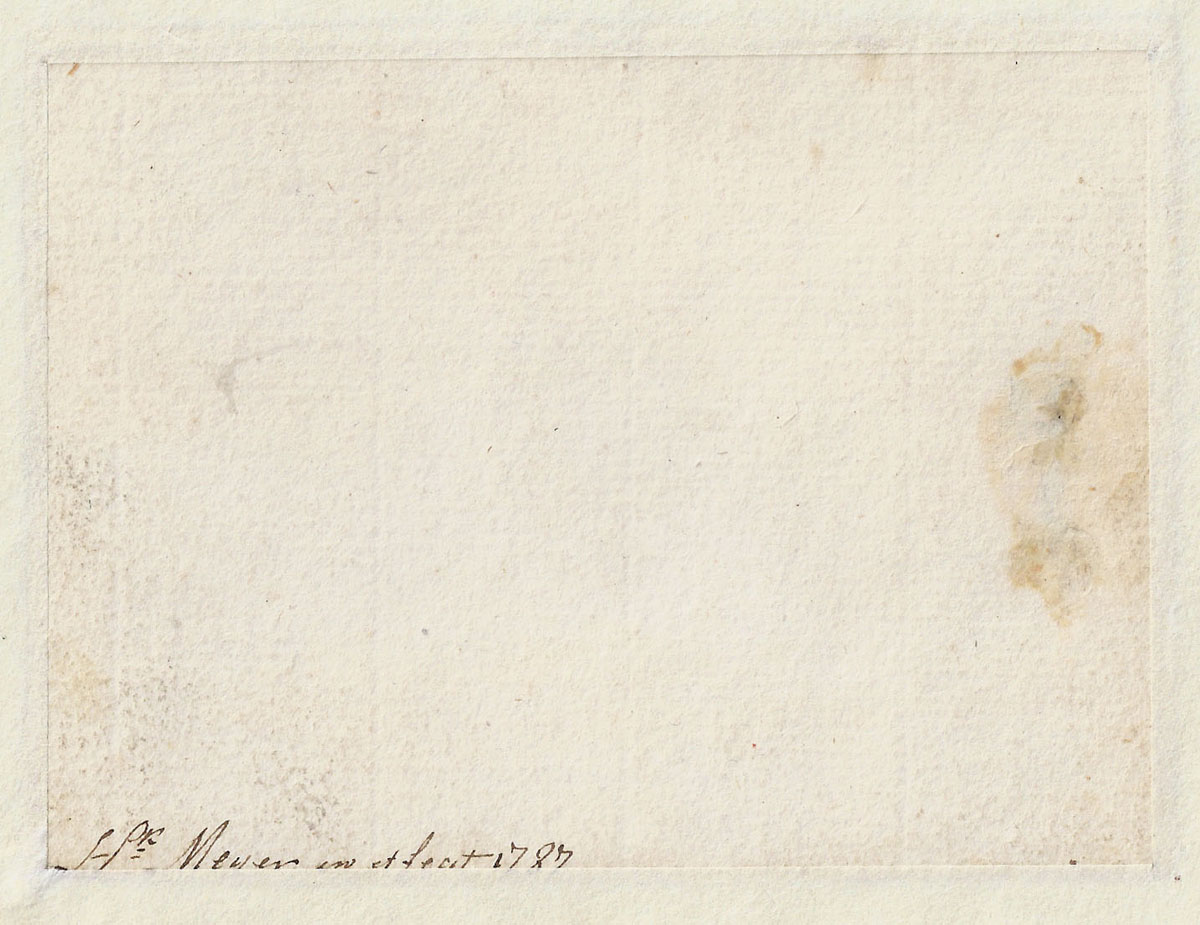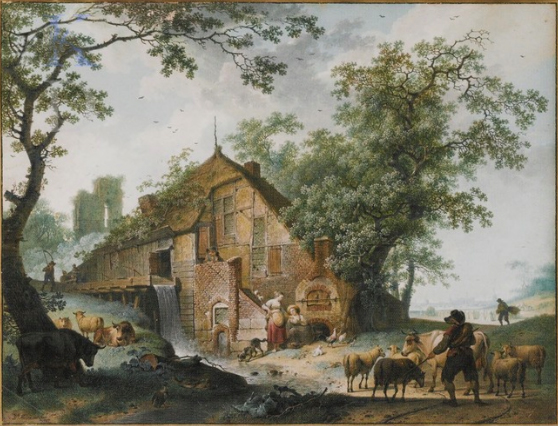HENDRIK DE MEIJER (Amsterdam 1744 – 1793 London)
Hendrik de Meijer (Amsterdam 1744 – 1793 London)
View of Arnhem
Watercolour and bodycolour on paper, black ink framing lines, 87 x 117 mm (3.4 x 4.6 inch)
Signed and dated ‘Hk. Meyer inv et fecit 1787’ (pen and brown ink, verso)
Provenance
- Bernardus de Bosch II (1742–1816), Amsterdam; his sale, Amsterdam (Van der Schley … De Vries), 10 March 1817, Album F, no. 45: ‘Gezigt op de stad Arnhem en een wintergezigt aan stads wallen; met dekverw; ieder h. 3 3/8, br. 4 ½ d.’ (to ‘De Lelij’ for fl.18.10)
- Private collection, Amsterdam
***
A peasant and his wife, accompanied by a dog, are walking along a sandy road on a summer’s day, while a cart laden with freshly mown hay is approaching the gates of an ancient town. The great Gothic cathedral dwarfs the picturesque burghers’ houses. The spires of several other churches suggest this is a city of wealth and prosperity. Although elaborately finished drawings of this sort often sprung from the artist’s imagination, in this case De Meijer has observed an actual scene: depicted is a view of Arnhem.1
The ancient town of Arnhem is the capital of the province of Gelderland, in the East of the Netherlands. De Meijer’s view offers a good prospect of the great Gothic church of St Eusebius, built from c. 1450. At the left the double spires of the church of St Walburgis can be seen, built in the mid-14th century. Both churches suffered severe losses during the Battle of Arnhem in 1944, but have been conscientiously rebuilt.
Our charming gouache can be compared to a spectacular and large gouache of a Landscape with Watermill, identically signed by Hendrik de Meijer and dated to the same year, 1787, was sold at Christie’s in 2004.2 The same addition of ‘inv[enit] et fecit’ (‘designed and made’) to the signature implies that the artist was not only proud of his abilities as a painter, but that he also valued his compositional skills.
Highly finished coloured drawings such as this sheet, almost like miniature paintings, were extremely fashionable during the eighteenth century. They were favoured by collectors of ‘papierconst’ (paper art), who kept them between the blank sheets of special collecting albums, away from the damaging influence of exposure to light. Because of this, they are often beautifully preserved, with their colours as fresh as the day they were painted, as is also the case in this work, which was owned by the leading collector Bernardus de Bosch II (1742–1816). It is clear that De Meijer has carefully studied the painters of the Golden Age.
Hendrik de Meijer was born in Amsterdam in 1744, not in 1737 as was previously thought.3 He was a member of the Stadstekenacademie there until he moved to Haarlem in 1768 and specialised in painted wall decorations, ‘behangsels’. The following year he became a director of the Haarlem drawing academy, where he taught Cornelis Apostool, Jos van den Berg, Egbert van Drielst, Leendert Overbeek and Barend Hendrik Thier, among others. In 1775 he visited London with Wybrand Hendriks, another director of the academy. From 1775 to 1782 he worked in Leiden, and from 1782 to 1789 in Amsterdam. In that year he moved to London, where he exhibited at the Royal Academy annually. ‘Henry Meyer’, as he was known in England, lived at 34 Charles Street (Middlesex Hospital), when he died in 1793. Meijer’s estate was sold in London by the auctioneer Greenwood on 29-30 April of the same year.4
SOLD
1. I am grateful to Laurens Schoemaker of the RKD, The Hague, for identifying the town as Arnhem.
2. Watercolour and bodycolour, 371 x 485 mm; Christie’s, New York, 22 January 2004, lot 131.
3. For the artist, see: P.A.F. van de Kamp, Hendrik Meijer (1744-1793): leermeester & tekenaar, thesis, The Hague 2002.
4. Lugt 5047.
